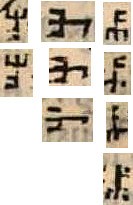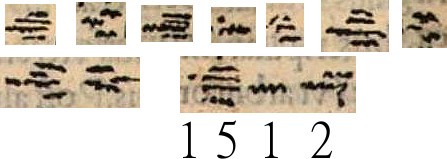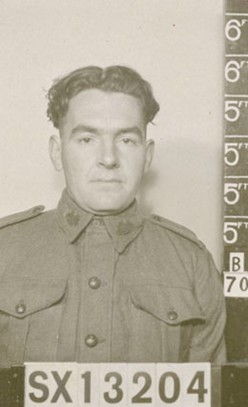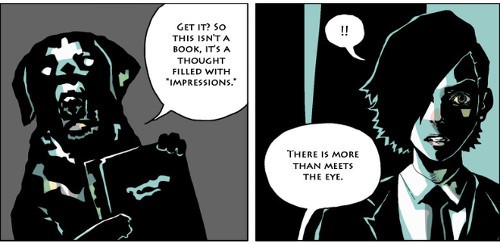The Devil’s Handwriting is one of my favourite little cipher mysteries, for the simple reason that it manages to combine age (it first appeared in print in 1532), brevity (it’s just under seven lines) and devilish visual wit (pitchforks and bats). I have no idea who its alleged author / owner Ludovico of Spoleto was, but I have to say I’m liking him already.
All the same, one question you always have to ask with old ciphertexts is whether they are actually simpler than they first appear: really, are we making too much of a fuss about it? Having toyed with The Devil’s Handwriting for a while here at Cipher Mysteries Towers, it now seems to me that most of the character variation we see in it was probably down to a scratchy old quill (as well as someone making a copy of an unclear original) rather than a hideously Byzantine homophonic cipher. Really, I think it’ll turn out to be nothing more than a monoalphabetic simple substitution cipher, albeit one that has been dragged backwards through a couple of hedges on its lengthy route through time to us.
The difficult bit, of course, is working out what its original alphabet was and what is, for want of a better phrase, the entropic decay that has happened to it ever since. However, if we start from my nicely sharpened version of the ciphertext and look a bit more closely at the shapes used in its devil-themed alphabet, I think we can see that some of the original patterns and structures are still visible.
Firstly, the ‘flourished pitchfork’ shape seems so consistent across all of its eight instances that I for one find it hard to imagine that it was not actually a single character in the original ciphertext.
Secondly, pretty much wherever the repeated pitchfork character has an extra leg or two going off to one side from the stem, the leg(s) always seems to go clockwise.
Thirdly, there’s just something about the ‘bats’ that reminds me of improvised peasant ciphers. I can’t help thinking that these are probably just enciphering Arabic digits, with (say) three enciphered as three bats. Of course, I also believe that what we’re looking at is a book copy of a version that was itself at least a copy, so that these are far less clear than we would like (and the degradation to these ‘bat-numbers’ may well prove impossible to reverse, however much we would like to). Despite all that, I’m reasonably confident that digits are indeed what we are looking at here, and that the plaintext may well have ended with a 4-digit year, e.g. something, for the sake or argument, not entirely unlike “1512”.
Fourthly, because there only a few other characters in the cipher alphabet (e.g. the ‘::’ four-dot character, etc), I think it likely that the original monoalphabetic substitution alphabet used (say) 21 letter instances, less four or five extra characters, yielding sixteen pitchfork characters shared between four rotations, i.e. four individual shapes per pitchfork / pigpen rotation. Maybe they originally looked something like this:-
Finally, I think there seems little reason not to believe that the plaintext is in either Italian (strictly speaking Tuscan or perhaps Venetian) or Latin, with Tuscan being the one on the shortest odds at the bookies.
Is this such a scary cipher any more? Hopefully a little less than before! 😉






